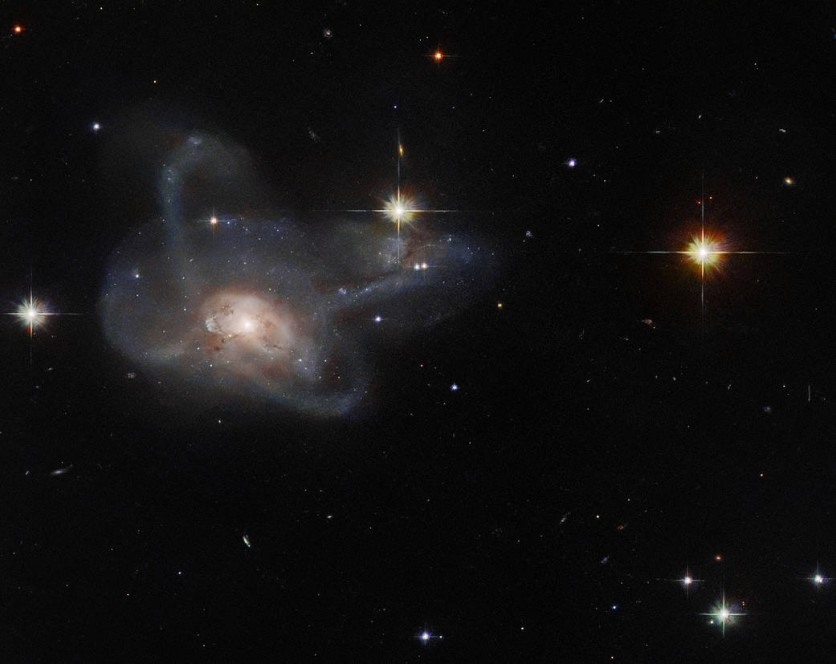NASA/ESA's Hubble Space Telescope just found a rare gem in the universe!
The galaxy CGCG 396-2 - a rare, intriguing multi-armed galaxy merger located around 520 million light-years from Earth in the constellation Orion, has been photographed by the Hubble Space Telescope.

Robbery of Stars
According to The Center for Astrophysics, the Milky Way and other large galaxies were created by the merger of smaller galaxies and the robbery of some of their stars!
There are probably even more galaxies that are gravitationally connecting with their neighbors, which results in star exchanges and impacts on both galaxies' forms.
Hence, scientists are intrigued to investigate the formation and evolution of these galaxies that merge and interact with one another.
After interacting with the Andromeda Galaxy for billions of years, our galaxy will eventually combine with it to form a larger galaxy.
We can tell from the remnants of those other galaxies that the Milky Way itself is the result of previous mergers, according to The Center for Astrophysics.
Additionally, our galaxy is currently exchanging long streams of stars with its satellites as a result of gravitational interactions.
The universe is filled with galaxy interactions and mergers, according to astronomers. Large galaxies in particular, evolved over billions of years by combining with smaller galaxies. The enormous elliptical galaxies and the biggest galaxies in the universe have evolved through mergers.
For instance, the Large and Small Magellanic Clouds, two of our neighbors, and other irregular galaxies likely acquired their warped shapes due to gravitational interactions with several galaxies.
Mergers and interactions influence the types of galaxies because elliptical galaxies account for around 15% of recorded galaxies and irregular galaxies for another 5%, according to The Center for Astrophysics.
Read also : NASA Hubble Space Telescope Witnesses Gravitational Phenomena From Clusters of Bright Galaxies
Gem of the Galaxy Zoo
This recent Hubble image Galaxy Zoo Project's gem - a citizen-based science initiative that enlisted the assistance of millions of volunteers in categorizing galaxies to aid researchers in tackling the problem of navigating the massive amounts of data produced by robotic telescopes.
After a poll by the general public, a list of the Galaxy Zoo's most fascinating astronomical objects was chosen for further Hubble investigations. This image, taken by Hubble's Advanced Camera for Surveys, shows CGCG 396-2, one of the objects of interest.
According to ESA, When an astronomer was given the impossible chore of identifying more than 900,000 galaxies by eye, the Galaxy Zoo project was born. The Galaxy Zoo team was able to crowdsource the study by creating a web interface and encouraging citizen scientists to participate in the initiative.
Over 40 million galaxy classifications were added in less than six months by an army of 100,000 volunteer citizen astronomers all thanks to the Galaxy Zoo Project.
Related Article : NASA Hubble Space Telescope Snaps 5,000 Ancient Galaxies Glowing Like Candles in Space
This article is owned by Tech Times
Written by Joaquin Victor Tacla
ⓒ 2025 TECHTIMES.com All rights reserved. Do not reproduce without permission.




